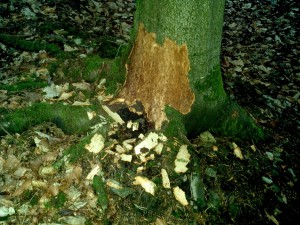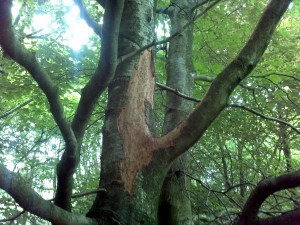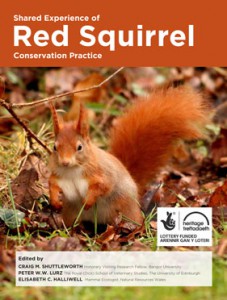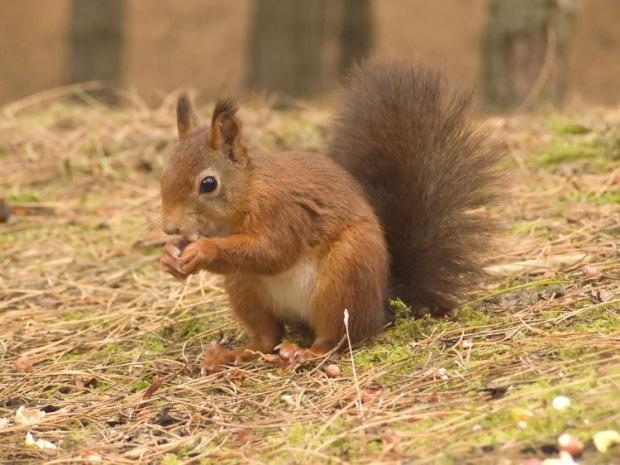 A Windermere landowner has just come home from a fortnight away to find about 20 of his trees badly damaged by bark stripping caused by grey squirrels – shown in the photos to the left. All the affected trees were about 30 years old, which is a devastating setback for someone who is working to manage his woodland, and especially so because when he went away he hadn’t been seeing any grey squirrels on his property.
A Windermere landowner has just come home from a fortnight away to find about 20 of his trees badly damaged by bark stripping caused by grey squirrels – shown in the photos to the left. All the affected trees were about 30 years old, which is a devastating setback for someone who is working to manage his woodland, and especially so because when he went away he hadn’t been seeing any grey squirrels on his property.
 This tree damage is typical of grey squirrels everywhere and has implications for all who are managing woodlands, both for the trees they’ve planted and the wildlife the trees support – it’s not just red squirrels that are affected by grey squirrel presence.
This tree damage is typical of grey squirrels everywhere and has implications for all who are managing woodlands, both for the trees they’ve planted and the wildlife the trees support – it’s not just red squirrels that are affected by grey squirrel presence.
Greys will travel in search of food or new territory, so to remove them from one woodland is simply not enough. What’s needed is a concerted effort by all landowners to remove the greys. There are some times of year when grey squirrels are less evident, so it also needs constant vigilance and a proactive approach to ensure that grey squirrels have not returned to a previously cleared area.
Our first newsletter carried an article on grey squirrel damage to trees at Haverthwaite Heights – see>>






